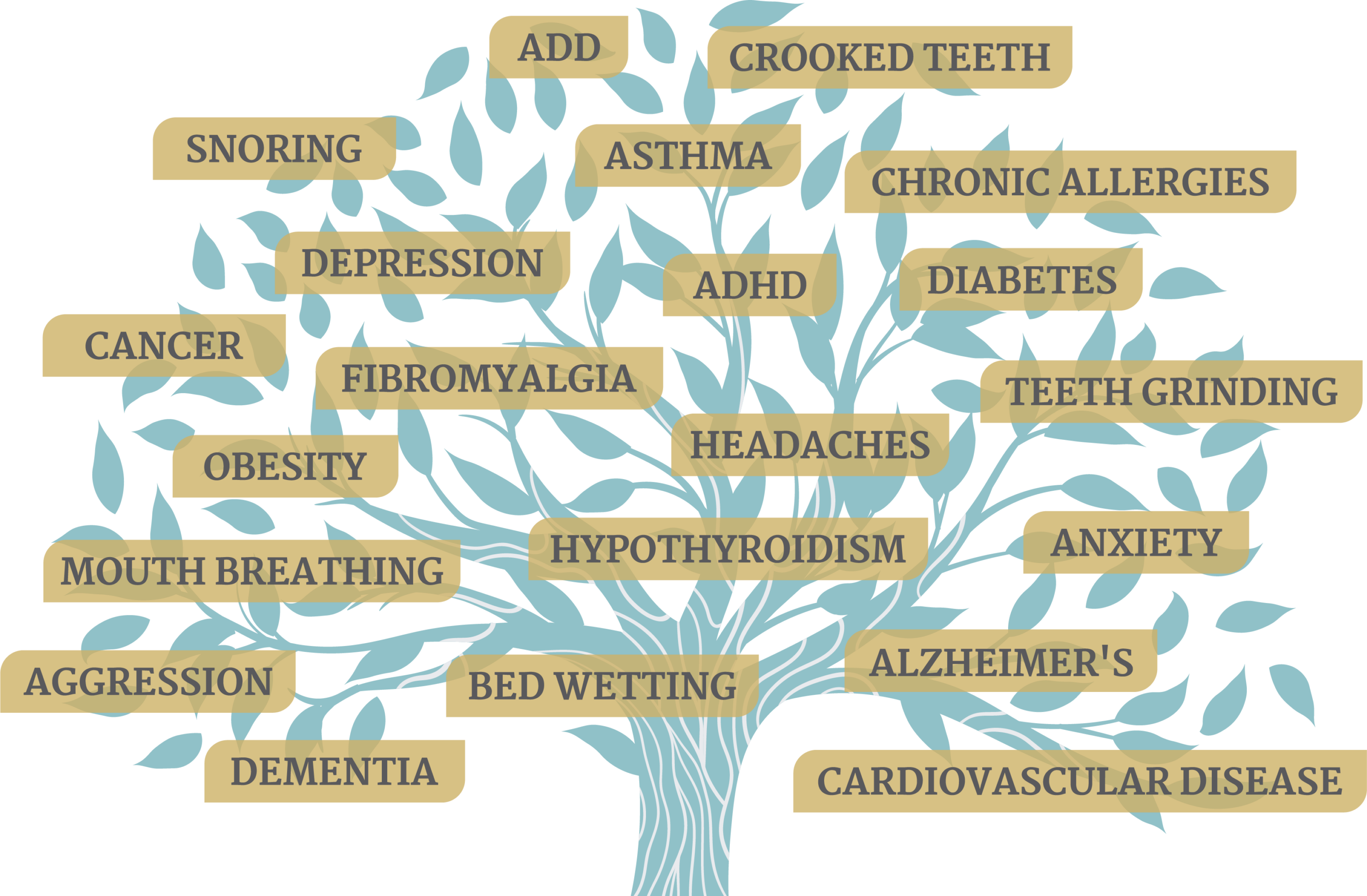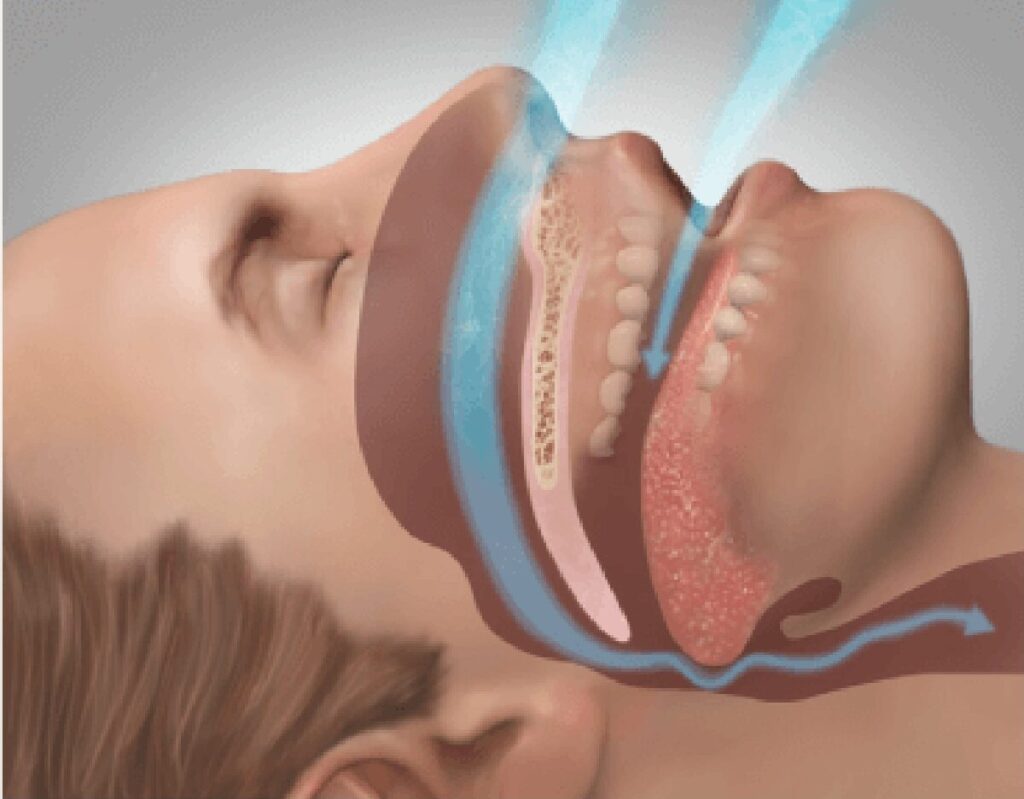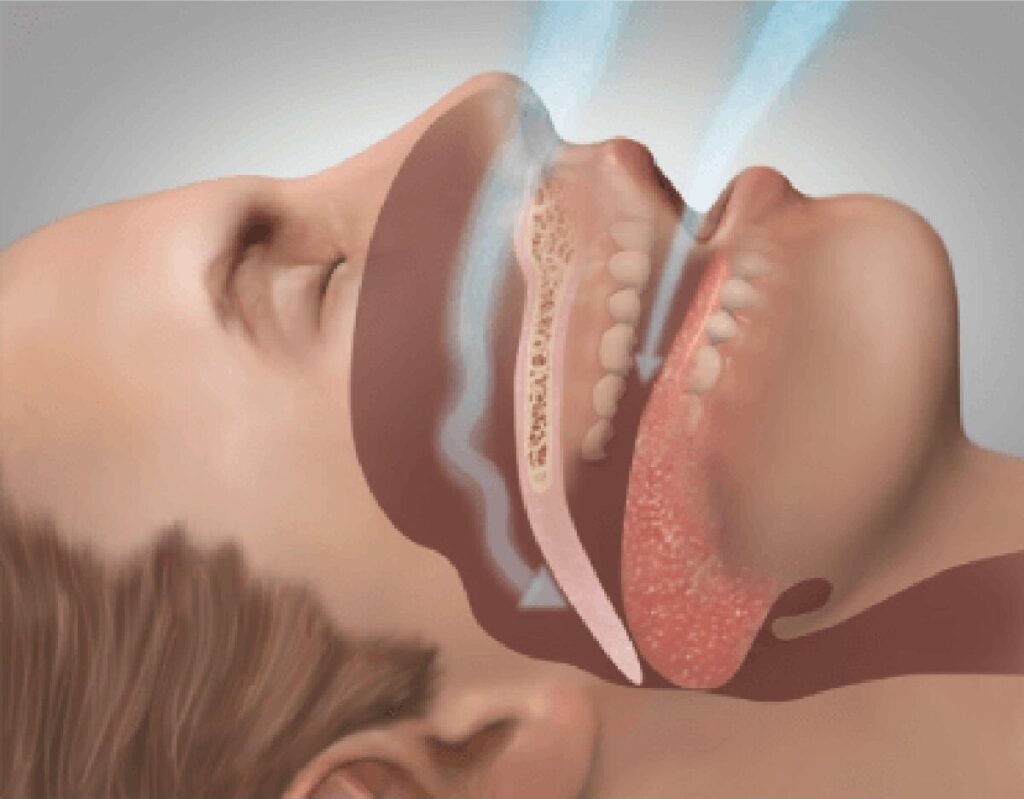The American Sleep Apnea Association estimates that at least 22 million Americans suffer from Sleep Apnea and that 80% of them may be undiagnosed. Many people don’t know that snoring is not normal and should never occur. But, even if you or your loved one does not snore, you could still be suffering from Obstructive Sleep Apnea (OSA), Upper Airway Resistance Syndrome (UARS) or another Sleep-Related Breathing Disorder (SRBD).
OSA & UARS have been linked to a number of serious medical conditions such as hypertension, anxiety, obesity, diabetes, asthma, and depression. Dr. Carson and her team at Integrative Dental Arts are passionate about your overall health.





While sleeping, our muscles relax. Sleep apnea can be caused when
when our neck muscles relax so much that the airway collapses and breathing is compromised—until we wake up and our muscles restore the shape of our airway—thus allowing us to breathe again.
During these episodes, our oxygen levels can drop to dangerous extremes. Apnea has been demonstrated to increase blood pressure during sleep by as much as 20 to 40 points above normal. It is hypothesized that these increases are behind what are known as “silent strokes,” which strip sufferers of cognitive ability in one small area of the brain at a time.
In addition, sleep apnea takes an enormous toll on our sleep quality. With sleep apnea, we can sleep only in small increments because we are continually awakening, preventing deep, REM sleep.
Muscle tone in the body relaxes
This causes breathing to be difficult or impossible.
The collapse of the airway may cause loud snoring, snorts, pauses in airflow, and labored breathing.
The brain allows us to resume sleeping.
Snoring is more than just a loud and annoying noise. It can be an indicator of a Sleep Breathing Disorder (SBD) that can be very serious. Approximately 42 million Americans have a SBD.
The most common form of a SBD is Obstructive Sleep Apnea, a medical condition where your tongue and soft tissues close off your airway and stop air from entering your lungs.
The DNA appliance has been shown to help improve facial balance and structure, expand and open the upper airway, and allow teeth to come into alignment naturally.
Night guards have been shown to help improve sleep apnea and TMJ symptoms. Picking the right one is important as it can make your condition worse.
The mandibular advancements appliance is FDA approved for treating sleep apnea as an alternative to CPAP
NightLase® therapy is a non-invasive treatment for increasing the quality of a patient’s sleep. It reduces the effects of sleep apnea and decreases the amplitude of snoring by means of a gentle, laser-induced tightening effect caused by the contraction of collagen in the oral mucosa tissue.
The first step towards a beautiful, healthy smile is to schedule an appointment.
Please contact our office by phone 818-889-0400 or complete this appointment request form.
Our patient coordinator will contact you to assist in scheduling the right appointment for you.
It is important that we speak with you before scheduling an appointment time to ensure that we have the appropriate time set aside for your specific needs and concerns.